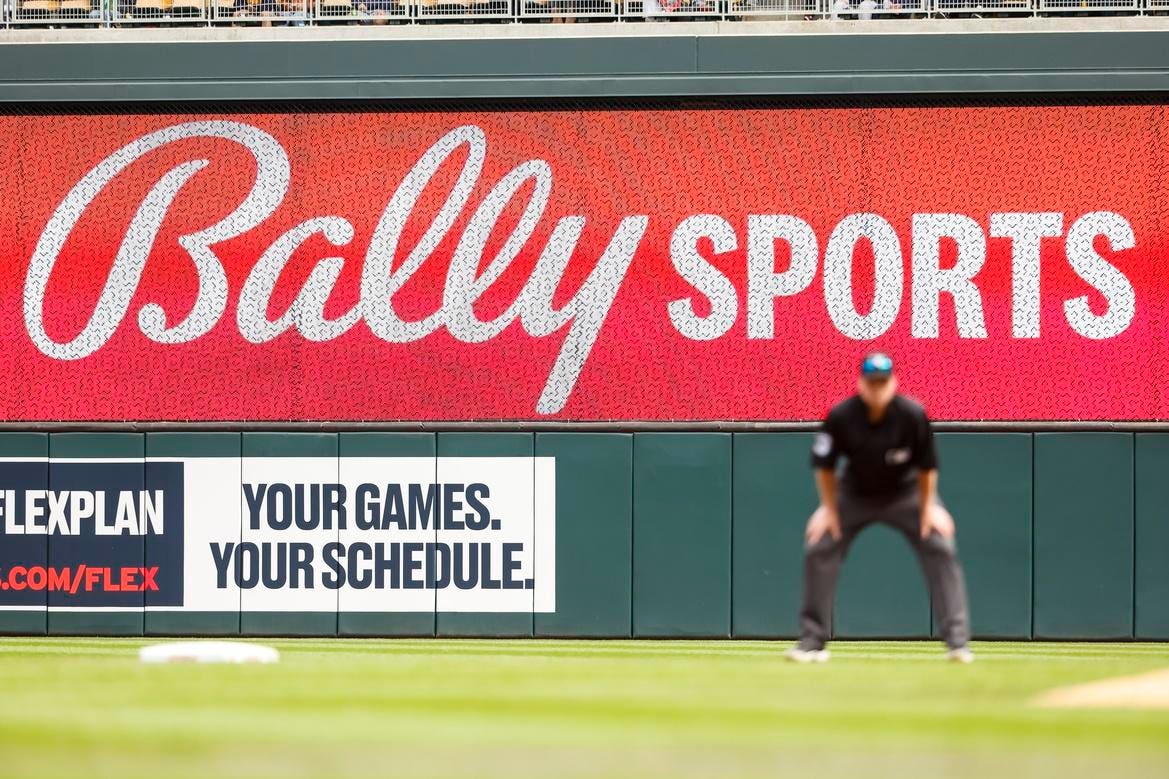The collapse of Diamond Sports Group, operators of regional sports network Bally Sports, … [+]
Over the past two seasons, overall viewership trends for the regional sports networks that support Major League Baseball have been disrupted by the ongoing bankruptcy of Diamond Sports Group (DSG).
In March 2023, DSG, which runs the popular Bally Sports network of regional sports, filed for Chapter 1 bankruptcy. It supported half of the MLB teams at the time, and In the NBA and NHL, this process has thrown all the RSN confusion. Midway through last season, two DSG teams were dropped — the San Diego Padres and Arizona Diamondbacks — followed by the Colorado Rockies leaving AT&T Sportsnet Rocky Mountain. All three were referred to MLB who offer and work out their own auto contracts.
As of now, Diamond Sports Group carries 12 teams across Bally Sports called RSNs: Atlanta Braves, Cincinnati Reds, Cleveland Guardians, Detroit Tigers, Kansas City Royals, Los Angeles Angels, Miami Marlins, Milwaukee Brewers, Minnesota Twins, St. Louis Cardinals, Tampa Bay Rays and Texas Rangers.
In May, Comcast dropped local sports network Bally Sports after failing to secure a new contract, which left a huge hole in MLB’s local viewership numbers. As the MLB continues to rise, due to the traffic dispute between Comcast and DSG, MLB RSNs are down 6% year-over-year compared to the same point last year. That number could improve. In a press conference Wednesday, Diamond said they’ve made “a lot of progress” with Comcast, opening the door for games to return to a major retailer.
Craig Sloan, recently named CEO of Playfly, a full-service, sports marketing and media company that acquired Home Team Sports, Impression Sports and Entertainment and Fox Sports College Properties, three major arms of FOX Sports in 2021, said MLB’s local sports network was proceeding as expected prior to the DSG/Comcast dispute that at the top level, sports are This is as unique on television as the year.
“When you look at the MLB, or the NBA or the NHL in general, the portfolio gives,” Sloan said in an interview with me for Forbes. “In general, one person will go up and one person will go down. The only difference that our insight team sees is that we will see numbers slightly above the national consensus when the big market groups are winning and when the small markets are winning we are seeing the numbers go down a little bit in the middle, but overall, for the last 10-15 years or so, it has been very similar. ”
Although Comcast’s case is bigger than MLB’s total, there have been promising signs from several teams.
In the designated market area of Philadelphia (DMA), the red-hot Phillies draw a rating of 6.83 TVHH equivalent to more than 217,000 TV households, an increase of +46% over the same number of games last season.
The Baltimore Orioles, starved for a winning team for years, are seeing the rewards on MASN. In the Baltimore DMA, their TV Household rating rose to a 4.91 average which means the O’s are serving over 57,000 TV Households per game. That’s a huge increase of +28% over the same number of games last season.
Cleveland Watchers saw a +7% increase over last season at the same time with an average Household rating of 4.24 in the Cleveland DMA which translates to over 65,000 TV Households per game.
Other teams that exceed 2023 YOY in their DMAs are the Dodgers, Royals, Brewers and Pirates.
Although the television numbers of RSNs are on the air due to the Comcast dispute, streaming continues to gain strength as subscribers move away from traditional television. Average unique viewers are up 10% while average usage is up 20% year over year.
According to Sloan, advertiser interest in MLB is always very strong given the large schedule of games and how the season plays out in the summer. Although they have fallen behind in recent years, the insurance company channel is also on the rise. For the automotive sector, it is based on OEM to OEM based on the introduction of new vehicles but continues to be strong for MLB. The biggest growth channel for advertising is the sports industry. While MLB reserves a number of ads for sports betting companies it is a highly competitive advertising space that has grown rapidly as an important advertiser. Some of the food continues to be the fast food industry, cellular carriers and other technology companies. Another important change has been in entertainment as streaming companies have grown.
“The disappearance of entertainment viewers from traditional television broadcasts has opened up an opportunity for the likes of Amazon Prime and others,” said Sloan of Major League Baseball and advertising.
The important question is what the future holds for the RSN brand in the future. MLB commissioner Rob Manfred said that getting all local media rights under one umbrella is similar to what the NFL has done to share revenue equally among teams. The ability to find all 30 groups under this model seems like a long shot. Clubs that have equity in well-performing RSNs are less likely to see the value of joining the model. Major market franchises such as the Yankees, Red Sox, Dodgers, and Astros may fall into the category.
At the same time, ESPN has the option to opt out of their national broadcast agreement with MLB in 2025. While some have concluded that ESPN will negotiate down, the conversation has also arisen about World Leader they want to acquire more local MLB media rights if they become available to power their new consumer streaming service that will launch next year. If so, media revenue from ESPN could remain at its current level or increase depending on the number of properties acquired. Diamond Sports Group Bankruptcy Drops MLB Regional Sports Network Viewership Trends
#Diamond #Sports #Group #Bankruptcy #Drops #MLB #RSN #Viewership #Trends

